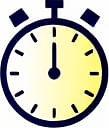Innovative Ideas for Structuring Your Workday
 by Verner Mayer
by Verner Mayer
Discover practical strategies to organize your workday effectively, including time blocking and hyperfocus techniques, to boost productivity and manage time better for professionals and students alike. These methods help create a balanced routine that enhances focus and efficiency.

Many people struggle with disorganized days that lead to wasted time and reduced output. A well-thought-out structure can transform how you approach tasks. For instance, time blocking involves dividing your day into dedicated segments for specific activities. This method allows you to focus on one thing at a time, reducing distractions and increasing completion rates.
Why Structure Matters
In daily life, especially for busy professionals, having a clear plan sets the foundation for success. Without it, tasks can pile up and overwhelm you. By implementing simple routines, you can achieve more with less effort. Hyperfocus, a state of intense concentration, becomes easier when your day is organized.
One effective way to start is by assessing your energy levels. Everyone has peaks and lows throughout the day. For example, if you feel most alert in the morning, reserve that period for demanding work. This approach ensures that high-priority items get your best attention.
Exploring Time Blocking
Time blocking is a straightforward technique where you assign blocks of time to tasks. Say you have a project deadline; allocate two hours in the morning solely for that. The beauty of this lies in its simplicity—it creates a visual map of your day, making it easier to stick to plans.
To begin, list out your daily responsibilities. Then, use a calendar or planner to slot them in. Remember to include breaks; working straight through can lead to fatigue. For instance, after a 90-minute block, take a short walk to recharge. This not only maintains productivity but also supports overall well-being.
Incorporating Hyperfocus
Hyperfocus refers to entering a flow state where you're fully immersed in an activity. To cultivate this, minimize interruptions by setting boundaries, like turning off notifications during work periods. Imagine tackling a complex report without constant emails pulling you away—that's the goal.
Practical steps include starting with shorter sessions and gradually increasing them. For students preparing for exams, dedicate specific blocks to study sessions followed by reviews. Over time, this builds the ability to sustain focus longer, leading to better results.
Additional Structure Ideas
Beyond the basics, consider themed days. For example, dedicate Mondays to planning and Fridays to wrapping up loose ends. This creates rhythm in your week, making it feel less chaotic.
Another idea is the Pomodoro technique, which involves working for 25 minutes then taking a five-minute break. Repeat this cycle a few times before a longer pause. It's particularly useful for those who find it hard to maintain attention over long stretches.
For teams, align your structure with colleagues. Hold meetings at fixed times to avoid overlap with individual work. This fosters collaboration while respecting personal schedules.
Overcoming Common Challenges
Sometimes, unexpected events disrupt plans. Flexibility is key; adjust your blocks as needed without abandoning the structure entirely. If a meeting runs late, reshuffle the rest of the day accordingly.
Tracking progress is also important. Keep a journal of what worked and what didn't. Over weeks, you'll refine your approach, turning it into a personalized system that fits your style.
Benefits for Professionals and Students
For professionals, a structured workday means hitting deadlines consistently and reducing stress. It turns chaotic schedules into manageable ones, freeing up time for personal pursuits.
Students benefit similarly by balancing classes, study, and leisure. A routine helps build habits that lead to academic success and a healthier lifestyle.
In essence, by adopting these ideas, you pave the way for sustained productivity. Start small, experiment, and watch as your days become more efficient and fulfilling.
Final Thoughts
Putting these strategies into action requires commitment, but the rewards are clear. A structured workday not only boosts output but also enhances satisfaction in what you achieve. Whether you're in an office or studying at home, these methods offer a path to better time management and focus.
